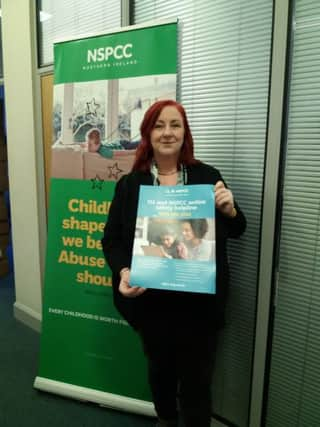NSPCC urges parents to get '˜clued into' online world of their children


And in an age where children are exposed to the world-wide web almost from birth, becoming savvy with technology and the Internet is something many parents could benefit from.
The NSPCC has teamed up with O2 to develop an award-winning partnership programme for parents to get ‘tooled-up on’ and clued in to, internet safety.
Advertisement
Hide AdAdvertisement
Hide AdIn fact, the NSPCC was among the first organisations to develop strategies to deal with the plethora of safeguarding issues which have arisen with the advent of the internet, particularly in regards to social media, chat forums, gaming, adult sites and interactive programmes.


The charity is now widely viewed as a must ‘go to’ resource for parents, not least because of its campaigns such as the ‘Share Aware’ campaign, which is targeted at parents of children aged eight to 12.
Margaret said: “We have had to build that capacity very quickly along with the technology. Our services would be fairly established around sexual abuse; domestic violence; neglect of children and this caught people on the back foot, but we invested heavily nationally. It was becoming a safeguarding issue for us. It was coming through our phones, our doors and we don’t see it as ‘over there;’ most children have this in their life, so we are trying to take the preventative approach and it is working very well.
“We’re trying to empower the parents who are lacking in confidence. As a society we didn’t really give people the tools to talk about these issues and yet these are the issues that, time and time again, come back into our court system, into our public concern arena, so we are trying to look at where those gaps are, and build those layers of positive and resilience-building information.”
Advertisement
Hide AdAdvertisement
Hide AdMargaret said that there are parents who don’t realise there are steps they can take immediately to reduce the risk of harm to their children when they go online.


“Children can watch adult content as soon as you have a tablet that does not have any parental controls on it. Your child is able to see anything that is on the internet.
“Some families are not using ‘Google SafeSearch’ or ‘Youtube For Kids.’ That alone will open up stuff you do not want your children to see at the age they are.
“And we really need to recognise that children are using adult technology. It was never designed for children. Some of the apps and websites are, but they are also in a world where adults are making contact with them and older children even.”
Advertisement
Hide AdAdvertisement
Hide AdMargaret added that it was important to stress that familiarity with technology has many benefits for young people in terms of their future, employment, educational value. However, there are various challenges unique to the online world that parents could benefit from knowing about, including children being able to tick a box online to say they are over 18 and access adult gaming, gambling and other sites.
Margaret said that there were a lot of young people being exposed to pornography at a very young age, or advertisements for it. There are also online adult versions of child’s films and cartoons, which can be disturbing and scary for children.
Research conducted by the NSPCC and others has shown that another major issue in terms of safeguarding is the growing trend of live streaming, which does not leave a record of what is going on, but which can be recorded, downloaded and shared by an abuser.
Childline has just completed their annual anonymous survey with over 1,500 secondary school pupils looking at the top 50 sites children are using and other online trends.
Advertisement
Hide AdAdvertisement
Hide AdThe results of this survey informs research, which is in turn used to produce free information for parents which can be accessed via an app or website.
The pupils are asked if their parents are talking to them about keeping safe online and if so, how often.
“We ask what is good about what social networking sites are doing, but if there is a site that is becoming a risk we put that on as a preventative.
“We also ask them what they have seen, have they seen content that upsets them and where they saw that. That could be violent content, sexual, bullying of other children. It could be stuff we don’t even know that is on the radar, apps that are up and coming.”
Advertisement
Hide AdAdvertisement
Hide AdParents can also get notifications on their phone if a new page has been uploaded and alerts if something that has sparked concerns is up and coming.
“We have a fairly good insight into what children and young people are doing. A lot of our information comes from the fact that we have a live Childline service, which can show us trends and patterns.”
The NSPCC’s Schools Service, meanwhile, is now delivering preventative safety advice to children in local primary schools.
“We are trying to get the children before they go to secondary school because the research will tell us if you have done some good work around boundaries and guidance in primary school they will tend to carry it into secondary school,” she declared.
Margaret said.